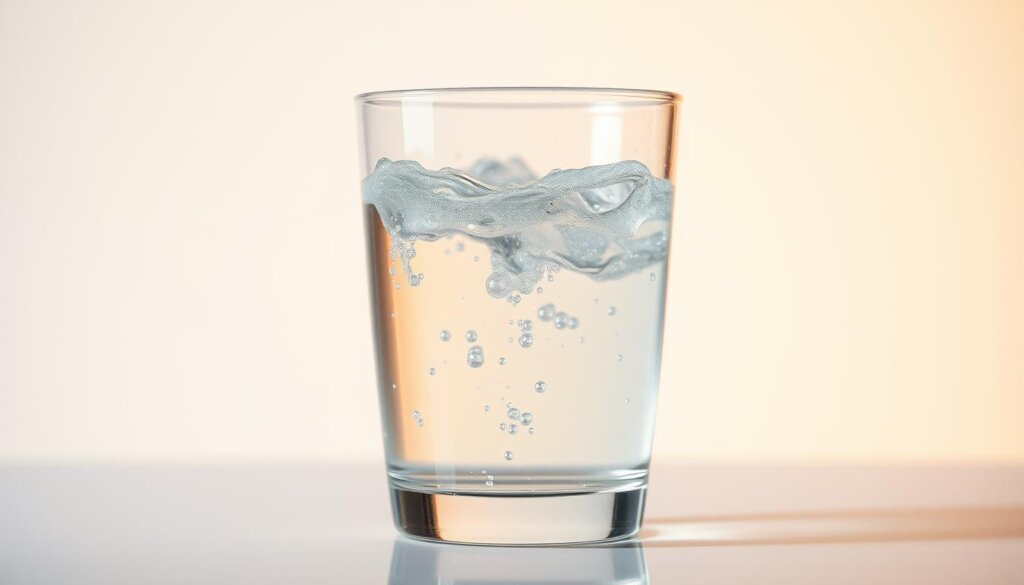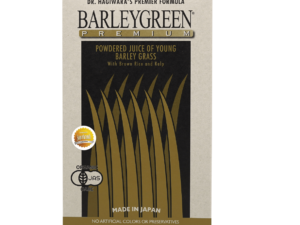Can I run my hydrogen water bottle twice? Wellness Group
Surprising fact: some PEM/SPE bottles can reach high hydrogen levels in a single cycle, with oxygen vented out to keep the drink pure.
This FAQ explains whether a second cycle helps, and when one pass is enough. The section gives clear, practical examples readers in Malaysia can use today.
It also outlines how PEM and solid polymer electrolysis split H2O to free molecular hydrogen and why vent ports matter for purity. Readers learn what to expect for taste, convenience, and how long hydrogen-rich water stays active.
Wellness Group offers fast local support in Malaysia. For quick help, WhatsApp +60123822655. Business hours are Monday–Friday 9:30 am–6:30 pm and Saturday–Sunday 10 am–5 pm.
A second cycle is sometimes useful, but more time does not always mean more dissolved gas. Modern products vent oxygen and impurities, so simple care keeps performance and flavor steady. Readers will find guidance on safety, daily intake, maintenance, and research links in the rest of the page.
Key Takeaways
- Most PEM/SPE cycles produce high hydrogen in one run; a second pass rarely doubles results.
- Venting removes oxygen and other gases to keep purity and taste stable.
- Simple care and regular cleaning protect device life and product performance.
- Wellness Group supports Malaysia customers via WhatsApp +60123822655 during business hours.
- Read on for safety tips, intake guidance, and quick examples for daily use.
Quick answer for Malaysia: Should you run your hydrogen water bottle twice?
Short answer: For most people in Malaysia, one full cycle is enough if they plan to drink within a few minutes. After opening, dissolved hydrogen stays effective for about 10–15 minutes, so immediate sipping preserves the best concentration.
If the cap stays off and someone will sip slowly beyond 15 minutes, pressing the power button again refreshes the levels quickly. If the unit stays sealed, elevated hydrogen can persist up to 12–13 hours, so one run will often suffice for later use.
- Drink fast: One cycle, drink within 10–15 minutes after opening for top results.
- Sip slowly: Refresh with another cycle just before drinking.
- Share or pour out: A second cycle helps for larger volumes or multiple servings.
- Hot days: In warm outdoor conditions, refresh more often to retain dissolved hydrogen.
For device-specific advice, Malaysians may message Wellness Group on WhatsApp at +60123822655. Support hours are Monday–Friday 9:30 am–6:30 pm and Saturday–Sunday 10 am–5 pm. Simple timing choices help users enjoy consistent taste and the possible effects of hydrogen-rich water per day.
Can I run my hydrogen water bottle twice?
Sometimes a quick extra pass restores lost dissolved gas and makes later servings fresher.
When a second cycle makes sense
Running an extra cycle helps when the cap has been off more than 10–15 minutes or when the bottle is split into multiple servings. In those cases, a short refresh boosts dissolved hydrogen concentration before drinking.
It also benefits users who prepare a bottle for a workout or commute. They can start a cycle before leaving, then run it again just before sipping if the cap was open. For larger groups, a second pass before the next pour keeps levels more consistent.
When a single cycle is enough
If the bottle stays sealed, one full cycle usually achieves near-saturation and holds elevated levels for hours. Drinking immediately after a single run preserves the best dissolved molecular hydrogen and the expected effect hydrogen-rich water.
- Best practice: drink within 10–15 minutes of opening for top results.
- Split servings: refresh before later pours to restore hydrogen concentration.
- Diminishing returns: back-to-back cycles rarely double levels once near saturation.
For quick, personalised guidance in Malaysia, readers may contact Wellness Group on WhatsApp at +60123822655 during business hours.
How hydrogen water bottles work: PEM/SPE electrolysis and hydrogen concentration
Inside modern designs, a compact electrolysis stack separates gases so only pure molecular hydrogen reaches the drinking chamber. This setup targets medium to high dissolved hydrogen while keeping taste and purity steady.
Proton Exchange Membrane (PEM) + Solid Polymer Electrolyte (SPE) basics
The PEM paired with an SPE drives the chemical process that splits H2O into gases. The membrane and plate assembly are the critical parts that enable selective transfer and minimise oxidation.
Where the oxygen goes: venting for purity and safety
Venting is by design: oxygen, chlorine and ozone are expelled through dedicated ports or the lid. Small base “weeping” from pressure changes can appear during or after a cycle and is usually normal.
Why “more time” isn’t always “more hydrogen”
Once near saturation, added electrolysis yields little extra dissolved molecular hydrogen. Back-to-back cycles help mainly when gas has escaped; otherwise users gain little by extending a single run.
For model-specific advice in Malaysia, contact Wellness Group on WhatsApp at +60123822655 during business hours.
Hydrogen retention timeline: getting the most from dissolved hydrogen
A simple timeline explains when high levels remain and when a quick refresh is useful before drinking.

Opened vs. sealed: 10–15 minutes vs. hours in airtight conditions
Once the cap is opened or vented, dissolved hydrogen drops fast. The practical window is about 10–15 minutes for strongest effect.
If the container stays airtight, elevated levels can hold for many hours. Typical sealed retention ranges up to 12–13 hours, so pre‑prep is feasible for later use.
Pouring into another glass and how long hydrogen lasts
Pouring into a sealed vessel keeps most of the gas. Measurable molecular hydrogen often persists for about 12 hours when the new container is tight.
Open glasses lose gas quickly. For shared servings, pour one glass and keep the main container closed, or refresh briefly before the next pour.
The best window to drink for optimal effects
Drink within 10–15 minutes after opening for peak hydrogen-rich water strength. If someone will sip slowly, keeping the cap on between sips helps retain levels.
- Seal the container for commutes; elevated levels can survive a trip.
- In warm Malaysian weather, off‑gassing speeds up—drink sooner or refresh before sipping.
- For taste and consistency, align cycles with actual drinking times rather than running far in advance.
Personalized tip: for timing and storage in Malaysia’s climate, reach Wellness Group on WhatsApp at +60123822655 during posted hours.
Does double-running increase hydrogen levels and taste noticeably?
Many users ask whether repeating a cycle produces a clear rise in dissolved gas and a better mouthfeel. The short reality is mixed: chemistry sets the limits, while sealing and timing shape what people taste.
Hydrogen concentration vs. sensory changes
Measured levels often show only small gains after back‑to‑back cycles once near saturation. If gas escaped because the cap was open, a quick refresh can restore concentration before drinking.
Sensory cues and practical tips
Visible bubbles and a “fresher” feel do not always match lab results. Low‑mineral tap or filtered water may show fewer bubbles yet still carry useful molecular hydrogen.
- Back‑to‑back sessions raise levels slightly when some dissolved gas left the container.
- Many report smoother taste right after a cycle, but taste alone is not proof of concentration.
- If the cap was off for 10–15 minutes, a refresh just before sipping gives the most noticeable lift.
- For sealed bottles, one well‑timed cycle usually balances concentration and taste.
- Keep devices clean; flat taste often means descaling is needed.
Need help fine‑tuning cycles for taste vs. convenience? Malaysians may WhatsApp Wellness Group at +60123822655 during business hours for tailored advice.
Safety, maintenance, and performance tips
Avoid hot or boiling water. Always use room temperature, cold, or iced water. Pouring hot liquid can damage the PEM membrane and may void the warranty.
A simple priming step if bubbling stops
If bubbling weakens, soak the membrane in warm water for 1–3 hours. Then run two or three short cycles to rehydrate the membrane and restore the process.
Cleaning and descaling for lasting quality
Clean drinking parts and the exterior with mild soap and warm water. Do not submerge the base, use a dishwasher, or scrub with metal brushes.
Descale monthly when local deposits form: cover the titanium plates with about 1/4 cup distilled white vinegar for up to 12 hours, then rinse well.
Battery, power, and normal venting
Expect roughly 10–20 cycles per full charge. Recharge in about 6–9 hours using the provided USB cable. Occasional moisture near the base is normal venting; wipe dry after use.
- Store upright and keep vents clear to reduce pressure weeping.
- Check for scale or blocked ports if performance drops; re‑prime the membrane if needed.
- For model-specific advice in Malaysia, WhatsApp Wellness Group at +60123822655 (Mon–Fri 9:30 am–6:30 pm; Sat–Sun 10 am–5 pm).
What type of water works best for hydrogenation?
Not all sources behave the same; mineral content and cleanliness shape performance and user experience.
Most modern bottles accept tap, filtered, RO, spring, purified, and well water. Users should pick the cleanest, best‑tasting option available for daily use.
Low‑mineral sources such as many RO supplies may show fewer visible bubbles yet still contain dissolved molecular hydrogen. That means fizz is not the only proof of effectiveness.
Tap, filtered, RO, spring, purified, and well water: what to expect
- Tap and spring: often balanced for taste and show moderate bubble activity; choose spring if tap is hard.
- Filtered: a good middle ground for quality and reduced scale.
- RO/purified: low minerals, fewer visible bubbles, but can still deliver hydrogen-rich water.
- Well: variable; pre‑filter if taste or odor is present to protect the device and improve quality.
- Alkaline water may be used if preferred, but the active factor is dissolved hydrogen, not pH alone.
| Source type | Typical mineral level | Bubble visibility | Maintenance note |
|---|---|---|---|
| Tap | Medium (varies by region) | Moderate | Filter if hard to reduce scale |
| Filtered | Low–medium | Moderate | Good balance; fewer deposits |
| RO / Purified | Very low | Low visible fizz | Descale less often; monitor taste |
| Spring / Well | Medium–high | Higher fizz possible | Pre‑filter if odor or heavy minerals |
For specific local advice in Malaysia, readers may WhatsApp Wellness Group at +60123822655 to learn which source pairs best with their model and regional water quality.
How much hydrogen-rich water to drink per day
Starting with a simple, repeatable plan helps most people notice changes over several weeks.
General guidance: A practical starting point is four to five bottles per day, roughly 60 ounces total. Space servings across the day to keep steady water intake and to track effects hydrogen over the first 4–6 weeks.
Many report small benefits in the first weeks when they keep timing and sealing consistent. If volume feels high, begin with fewer servings and build up while observing how they respond.
Athletic performance, endurance, and recovery
Athletes often drink around the same daily total but time cycles near warm-ups and after workouts. Sipping promptly after a cycle gives the freshest serving for training and recovery.
- Start with ~4 bottles per day; adjust for thirst and routine.
- Space servings before, during, and after activity to support endurance.
- Keep the same rhythm on rest days to compare how they feel over weeks.
| Use case | Suggested servings | Timing tip |
|---|---|---|
| Everyday routine | 4–5 bottles (~60 oz) | Evenly spaced across the day |
| Training days | 4–5 bottles | Before warm-up and post-workout |
| Start-up plan | 2–3 bottles, then increase | Monitor effects over 4–6 weeks |
Local help: For personal routines in Malaysia, WhatsApp +60123822655 during business hours for tailored advice.
Hydrogen water and antioxidant properties: what research suggests
Research into hydrogen-rich water explores how a tiny molecule may affect oxidation and cellular stress. Studies range from lab work to small clinical trials. Results point to promising antioxidant properties, yet larger trials are needed to confirm long-term health benefits.
Oxidative stress, free radicals, and molecular hydrogen
Oxidative stress from free radicals contributes to aging and many chronic conditions. The hydrogen molecule has been studied for selective scavenging of harmful radicals.
Key points:
- Molecular hydrogen may reduce markers of oxidative stress and downregulate inflammatory cytokines.
- Some trials report antioxidant properties in blood tests after regular intake of hydrogen-rich water.
- Mechanisms might include modulation of Nrf2 pathways rather than broad antioxidant replacement.
Emerging evidence across metabolic, cardiovascular, and wellness areas
Clinical and systematic studies show mixed but encouraging signals. Small trials suggest potential benefits for lipids, endothelial function, glucose markers, liver measures, dialysis fatigue, and mood.
“Evidence is promising but preliminary; larger, well‑controlled studies are needed to confirm efficacy and clarify mechanisms.”
Practical takeaway: view hydrogen-rich water as a complementary wellness option, not a cure. For science summaries tailored to personal goals, Malaysians can message Wellness Group at +60123822655 during business hours.
Quality and technology matter: membranes, materials, and gas purity
Build quality shapes performance. A well‑designed unit uses a durable membrane and tidy seals so output stays consistent from one cycle to the next.
PEM/SPE systems are engineered to vent oxygen and oxide gases while keeping the desired hydrogen gas in the drinking chamber. That venting maintains purity and supports steady levels during use.
Materials matter. Choices such as borosilicate glass or Tritan affect durability, taste, and day‑to‑day handling. Pick the material that fits an active Malaysian routine.
- Construction and membrane design influence how reliably a device produces clean gas.
- Active venting preserves hydrogen concentration in the chamber by removing unwanted gases.
- Independent lab testing offers proof that products meet claimed purity and concentration.
- Easy maintenance—regular cleaning and descaling—keeps output consistent across cycles.
- Practical features to compare: seals, ports, ergonomics, and battery life for charging ease.
“A well‑engineered unit makes timing and routine simpler, so one timely cycle can be very effective.”
For help choosing or caring for a device in Malaysia, WhatsApp +60123822655 during business hours for tailored advice.
Troubleshooting common results from running twice
Simple checks will clarify why visual fizz or minor leaks appear after repeating a session. A quick look can separate normal vent behavior from an issue that needs attention.
Low-mineral sources and faint bubbles
Low-mineral water often shows fewer visible bubbles even when dissolved hydrogen levels are good. Visual fizz is not a reliable gauge of concentration.
If the drink sat open, a short refresh can make the serving seem fresher, but big changes in bubbling are unlikely.
Overfilling, pressure and base “weeping”
Avoid filling to the brim. Leaving headspace cuts pressure and reduces minor moisture at the base during a cycle.
Venting expels oxygen and oxide gases by design. Small base weeping usually means normal vent action, not a leak.
- If moisture appears, wipe the base dry and check vents are clear before the next session.
- Try a source with moderate minerals for stronger visuals, or drink promptly after a cycle.
- Clean, descale, and re‑prime if output seems inconsistent; check battery and ports first.
- Keep a tight seal for storage to preserve dissolved gas; open containers lose content faster.
Need quick troubleshooting in Malaysia? WhatsApp Wellness Group at +60123822655 during business hours with a short video to speed support.
Contact Wellness Group in Malaysia
Those with asked questions about device use, timing, or routine support can get fast help from a local team. The service is friendly and practical, with clear tips on care and daily habits.

WhatsApp: +60123822655
For quick answers, message Wellness Group on WhatsApp. Share the device model, your water source, and how cycles are run to get tailored advice.
Business hours
Monday 9:30 am-6:30 pm; Tuesday 9:30 am-6:30 pm; Wednesday 9:30 am-6:30 pm; Thursday 9:30 am-6:30 pm; Friday 9:30 am-6:30 pm; Saturday 10 am-5 pm; Sunday 10 am-5 pm.
- Ask about timing strategies for single vs. double cycles to keep water fresh and convenient.
- Request maintenance tips to protect performance, taste, and longevity.
- Get help choosing compatible sources and routines for day use or athletic needs.
- Learn simple troubleshooting steps before booking service.
| Request type | What to include | Typical reply time |
|---|---|---|
| Quick how-to | Model + short description of issue | Within the same day |
| Maintenance & tips | Water source + usage pattern | Same day or next business day |
| Research & benefits | Goals for health and routine | 1–2 business days |
Conclusion
Conclusion
This short wrap-up distills timing, care, and realistic expectations for daily use. One well-timed cycle and prompt drinking deliver the best levels; seal the container and elevated gas can hold for many hours.
PEM/SPE tech vents oxygen for purity. Regular cleaning, descaling, and occasional priming protect performance and taste. Research shows potential antioxidant effects and benefits for health, including reduced oxidative stress, but larger trials are needed.
For a stronger immediate experience, sip soon after a cycle or refresh briefly before drinking. For a personalised routine in Malaysia, message Wellness Group on WhatsApp at +60123822655 (Mon–Fri 9:30 am–6:30 pm; Sat–Sun 10 am–5 pm). Enjoy a simple, reliable habit that supports overall health and wellness — a strong.
FAQ
Can the device be run a second time to increase dissolved hydrogen?
Running a second electrolysis cycle can raise dissolved molecular hydrogen in some models, but gains are often marginal. Many Proton Exchange Membrane (PEM) and Solid Polymer Electrolyte (SPE) systems reach useful concentration in one full cycle. A repeat cycle may help low-mineral or very cold water, yet it can shorten membrane life and use extra battery power.
When does a second cycle make sense?
A repeat cycle makes sense if the first run showed weak bubbling, if very low-mineral or reverse-osmosis water was used, or if the bottle sat open and lost hydrogen before drinking. It also helps when aiming for the maximum possible concentration for athletic recovery or acute antioxidant needs, but users should balance benefit against device wear and battery use.
When is a single cycle enough?
For everyday use and most wellness goals, one complete cycle typically yields effective dissolved hydrogen levels. Most people notice no sensory difference after a second run. If bottled or filtered water was used and the device is well maintained, one cycle is usually sufficient.
How do PEM and SPE systems produce hydrogen?
PEM and SPE electrolysis split water into hydrogen and oxygen using a membrane that conducts protons. The membrane keeps gases separate so the bottle delivers mostly molecular hydrogen dissolved in the liquid, while oxygen is vented or isolated to maintain purity and safety.
Where does the oxygen go during electrolysis?
Oxygen is either vented to the atmosphere through a one-way valve or trapped in a separate chamber, depending on design. Proper venting prevents pressure buildup and reduces the chance of re-contact with dissolved hydrogen, which helps maintain hydrogen purity.
Why doesn’t running longer always produce more hydrogen?
After an initial rise, dissolved hydrogen approaches an equilibrium with the generation rate, membrane efficiency, and water properties. Extended cycles can yield diminishing returns due to saturation limits, gas escape, and membrane heating that lowers efficiency.
How long does dissolved hydrogen stay in an opened bottle?
Once opened, dissolved hydrogen begins to escape quickly. Most loss occurs within 10–15 minutes from an open container. Sealed, airtight conditions can retain useful concentrations for several hours, but pouring and agitation accelerate off-gassing.
What happens if water is poured into another glass?
Transferring liquid reduces hydrogen concentration through turbulence and increased surface area. For best results, drink directly from the sealed bottle or pour gently and consume within 10–15 minutes to capture most benefits.
When is the best window to drink for optimal effects?
The ideal window is immediately after the electrolysis cycle ends or within 10–15 minutes if the bottle is opened. Drinking during this period maximizes intake of dissolved molecular hydrogen and potential antioxidant effects.
Does running twice change taste noticeably?
Most users report little to no perceptible taste change after a second run. Hydrogen is colorless and odorless; any taste differences usually come from water source minerals. Elevated hydrogen concentration rarely alters flavor.
Does a second run significantly increase antioxidant effects?
Small increases in dissolved hydrogen may slightly boost antioxidant potential, but clinical benefits depend on dose, timing, and individual response. Evidence shows molecular hydrogen can reduce oxidative stress, yet marginal concentration gains from a repeat cycle may not produce large additional effects.
Are there safety concerns with repeated cycles?
Avoid using hot or boiling liquid; high temperatures can damage membranes. Frequent repeated cycles can accelerate membrane wear and reduce long-term performance. Always follow manufacturer guidelines on cycle limits, charging, and water temperature.
What if bubbling stops before cycle completion?
If bubbling ceases, the membrane may need priming or gentle soaking. Check water level, ensure the unit is charged, and inspect seals. A short soak with recommended water can restore ion pathways for consistent electrolysis.
How should the unit be cleaned and descaled?
Regular gentle cleaning preserves membrane life. Use dilute citric acid or manufacturer-approved descaler for scale buildup. Avoid harsh abrasives and chlorine-based cleaners that can degrade materials and reduce hydrogen production.
How many battery cycles per charge and what’s typical charge time?
Battery life varies by brand and model. Typical portable units deliver several full electrolysis cycles per charge, with recharge times ranging from one to three hours. Check the device manual for exact specs and expected cycle count per charge.
Which water types work best for hydrogenation?
Mineral-containing tap, spring, and filtered water often yield stronger visible bubbles and faster hydrogen production. Reverse-osmosis and very pure water produce less visible gas because they lack ions, so a second cycle can help but may still show weaker bubbles.
How much hydrogen-rich water is recommended per day?
General guidance suggests moderate intake spread across the day. Many studies and practitioners recommend daily consumption during the first 4–6 weeks to assess benefits. Amounts vary; common usage ranges from one to three 300–500 ml servings, tailored to activity and goals.
Is hydrogen water useful for athletic performance and recovery?
Emerging evidence indicates molecular hydrogen can support endurance and recovery by reducing exercise-induced oxidative stress and inflammation. Athletes often use it around training sessions, but outcomes depend on timing, dose, and individual physiology.
What does research say about antioxidant properties?
Research shows molecular hydrogen selectively neutralizes harmful reactive oxygen species and may modulate signaling pathways tied to oxidative stress. Studies explore benefits across metabolic, cardiovascular, and wellness contexts, though more large-scale trials are ongoing.
Why do materials, membrane quality, and gas purity matter?
Membrane durability, electrode composition, and sealing determine hydrogen concentration, purity, and device lifespan. High-quality components reduce oxygen crossover and contamination, improving safety and performance over time.
Why might repeated runs produce weak bubbles with low-mineral water?
Low-conductivity water lacks ions needed for efficient electrolysis, so visual bubbles appear sparse. Repeating cycles can help but won’t fully match results from mineral-containing water. Consider adding trace minerals if compatible with the device.
What causes pressure or “weeping” during cycles?
Overfilling, blocked vents, or rapid gas generation can cause minor liquid seepage around seals. Follow fill lines, allow proper venting, and avoid obstructing valves to minimize this issue.
How can Wellness Group in Malaysia be contacted?
WhatsApp: +60123822655. Business hours: Mon-Fri 9:30 am–6:30 pm; Sat–Sun 10 am–5 pm. They can advise on models, maintenance, and local service options.

Khloe Tan
Khloe Tan is a Certified Nutritionist, Corporate Wellness Trainer, and Holistic Health Specialist with over 15 years of experience in the health and wellness industry. She has delivered more than 100 talks nationwide, inspiring and educating diverse audiences on nutrition, lifestyle, and sustainable wellness. Her work has positively impacted over 3,000 lives, and she continues to champion holistic approaches to well-being in both corporate and personal settings.





